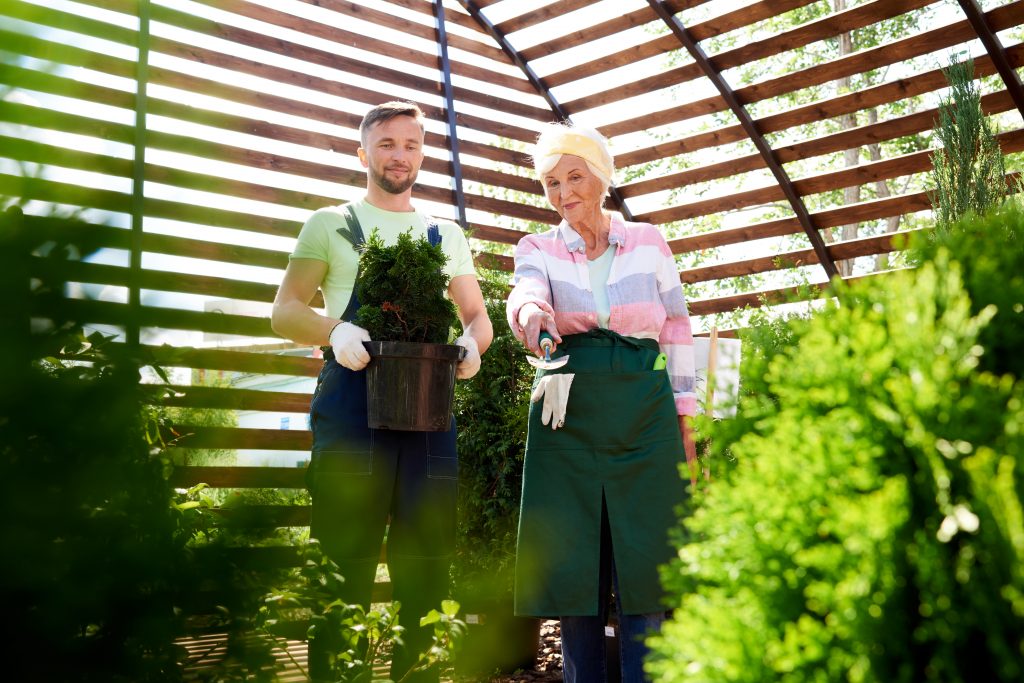Do you want to grow your own fruits, vegetables, and herbs? Edible gardening is a great way to enjoy fresh, healthy produce while also enhancing the beauty of your outdoor space. With the right knowledge and planning, you can create a garden that is both attractive and productive.
Before you get started, it’s important to choose the right location for your garden. Most edible plants require at least six hours of sunlight per day, so look for a spot that gets plenty of sun. You’ll also want to make sure the soil is well-draining and rich in nutrients.
Once you’ve chosen your location, it’s time to plan your garden. Consider the types of plants you want to grow and how much space they will need. Some plants, like tomatoes and peppers, require more room to grow than others.
When it comes to selecting plants for your garden, choose varieties that are well-suited to your climate and soil type. If you’re new to gardening, start with easy-to-grow plants like lettuce, radishes, and herbs. As you gain experience, you can try more challenging crops like tomatoes and squash.
One of the great things about edible gardening is that it allows you to enjoy fresh, organic produce right from your own backyard. You can also save money on groceries and reduce your carbon footprint by growing your own food.
In addition to the practical benefits, edible gardening can also be a beautiful addition to your outdoor space. By incorporating fruits, vegetables, and herbs into your landscaping, you can create a garden that is both functional and aesthetically pleasing.
In conclusion, edible gardening is a rewarding and sustainable way to enjoy fresh produce while also enhancing the beauty of your outdoor space. With the right planning and care, you can create a garden that is both productive and beautiful.
- When planning your edible garden, consider the soil type, amount of sunlight, and water requirements of each plant to ensure they thrive.
- Companion planting is an excellent way to maximize space and promote healthy growth in your edible garden.
- Consider using raised beds or containers to make maintenance and harvesting easier in your edible garden.
- Don’t forget to incorporate edible flowers, herbs, and fruits into your garden to add color and variety to your meals.
- Harvest your crops regularly to encourage new growth and avoid overcrowding in your edible garden.
- To keep pests at bay, try natural methods such as companion planting, crop rotation, and handpicking.
- Consider donating any surplus crops to local food banks or sharing with friends and neighbors to reduce food waste and promote community involvement.
Edible gardening is a wonderful way to bring fresh, delicious produce into your own backyard. Not only does it provide a source of healthy, homegrown food, but it can also be a relaxing and rewarding hobby. With some careful planning and a little bit of work, you can create a beautiful and bountiful edible garden that will provide you with fresh produce throughout the growing season. Whether you’re a seasoned gardener or just starting out, edible gardening is a great way to connect with nature and enjoy the fruits of your labor.
In addition to providing fresh produce, edible gardening can also be a sustainable way to garden. Growing your own fruits, vegetables, and herbs reduces the amount of packaging and transportation required to bring food to your table, which in turn reduces your carbon footprint. Additionally, many edible gardening techniques such as composting and rainwater harvesting can also help reduce waste and conserve resources. By incorporating sustainable practices into your edible garden, you can enjoy fresh, delicious produce while also helping to protect the planet.

